Welcome to my small celebration of symmetry. This beach party’s a renewal of kinship with animals we share symmetry with and a reminder that symmetry varies in ways worth appreciating. An in-depth survey of symmetry would expose developmental and evolutionary mysteries better left to zoology and comparative anatomy courses. So instead, let’s head to the shore, where examining a few examples from the world of bilateral animals will serve as a foundation for recognizing and enjoying less familiar layouts.
Bilateral symmetry
Most of us are familiar with bilateral symmetry because that’s what people and their most common pets have. A bilateral body can be divided into roughly mirror images along only a single plane. Animals with bilateral symmetry have left and right sides, what we sometimes call handedness.
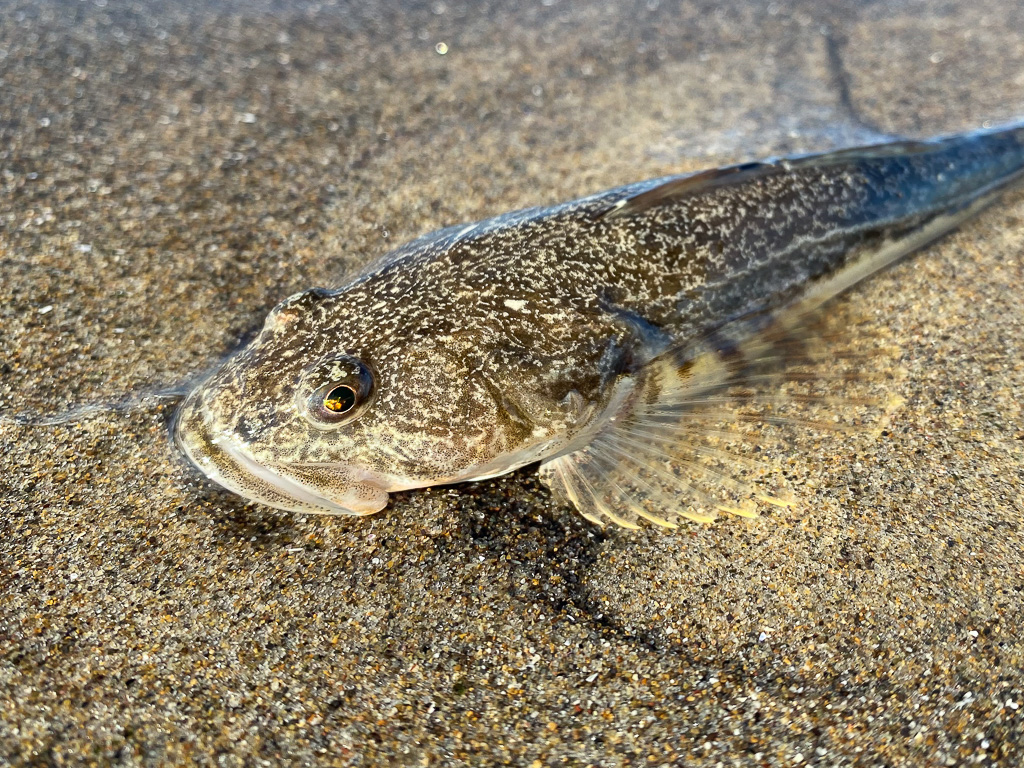
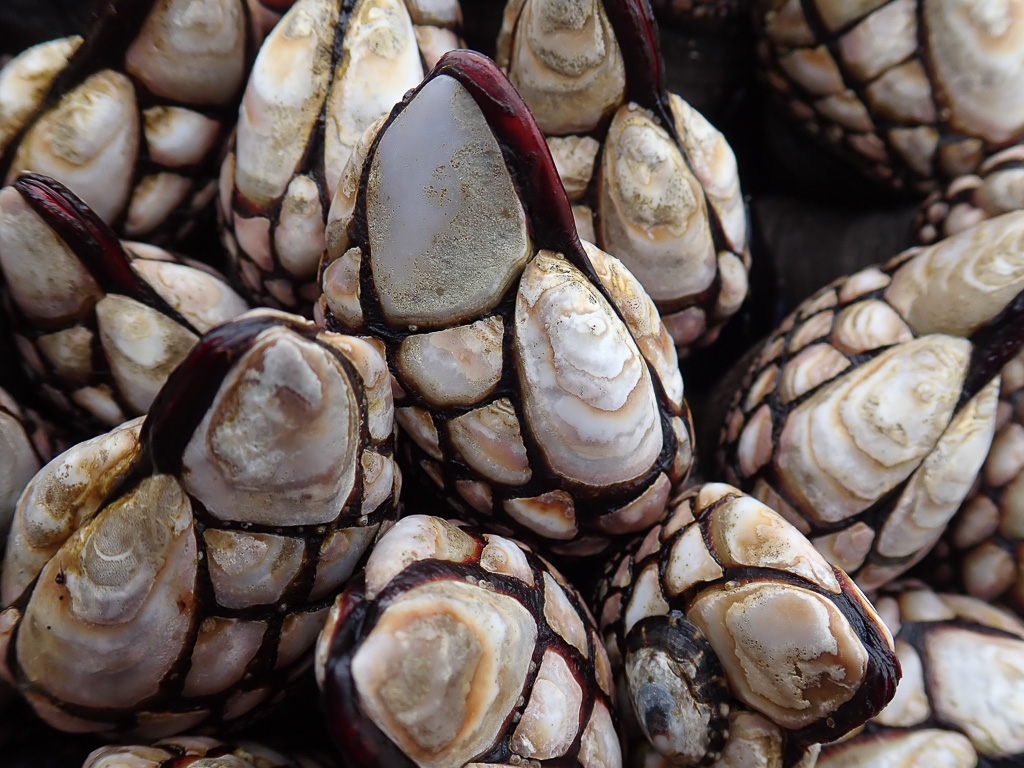
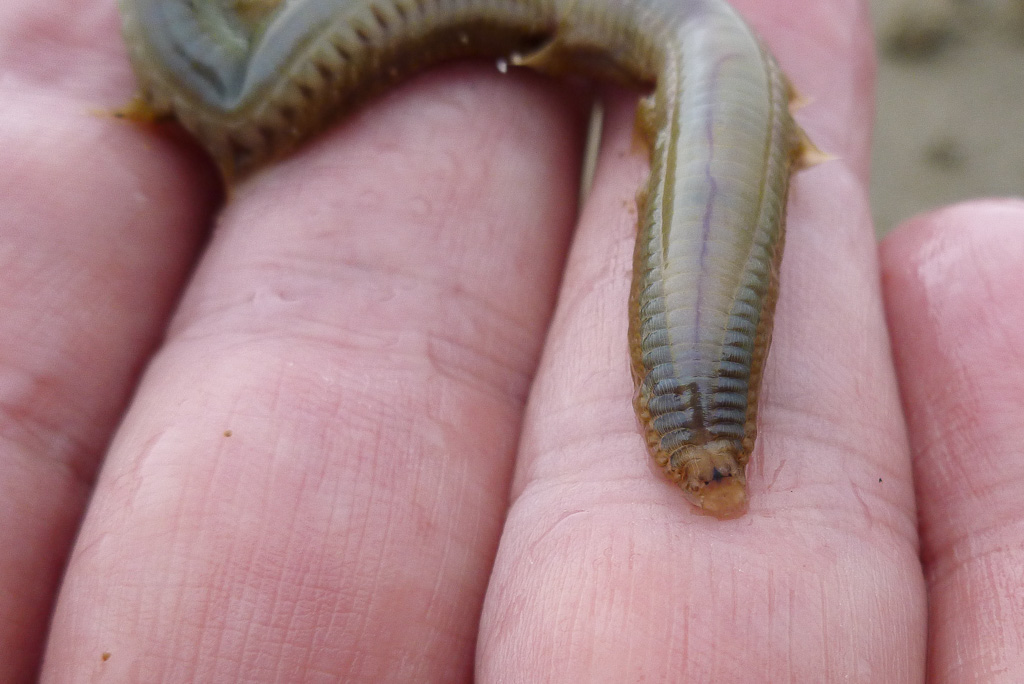

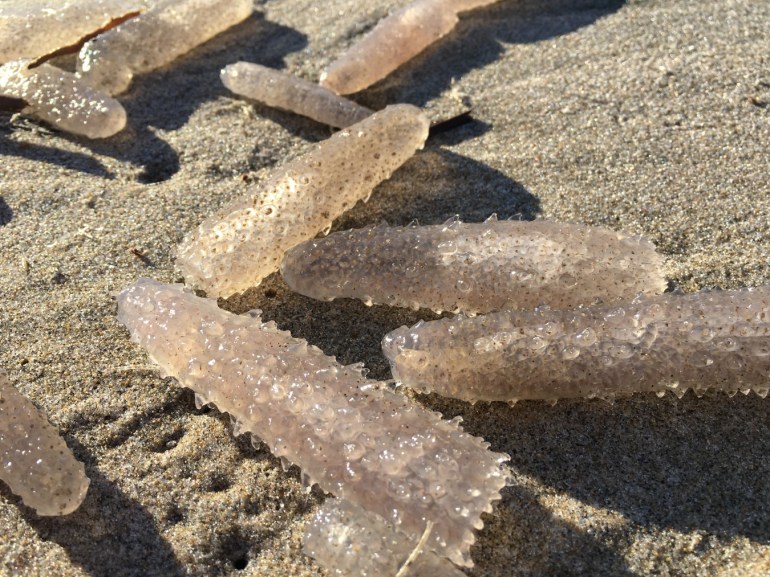
Radial symmetry
This cast of characters gets along without handedness. Like pizza, their bodies can be divided into equal parts along a few to many planes.
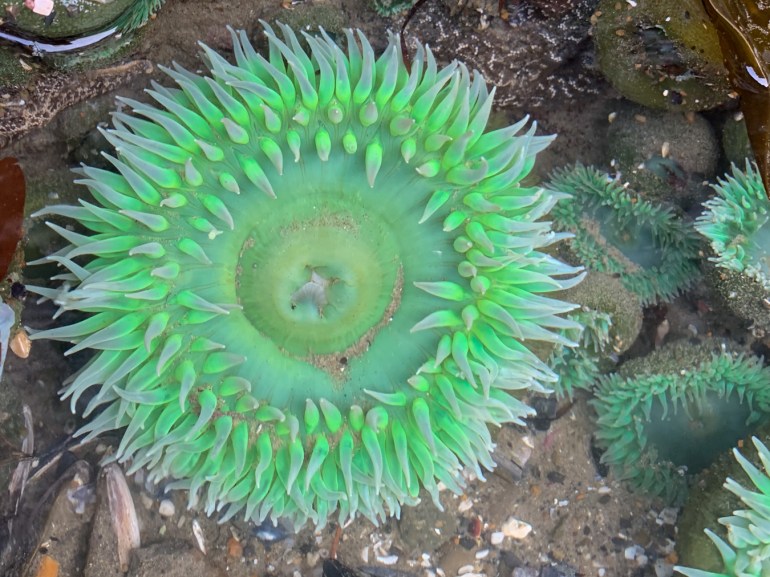

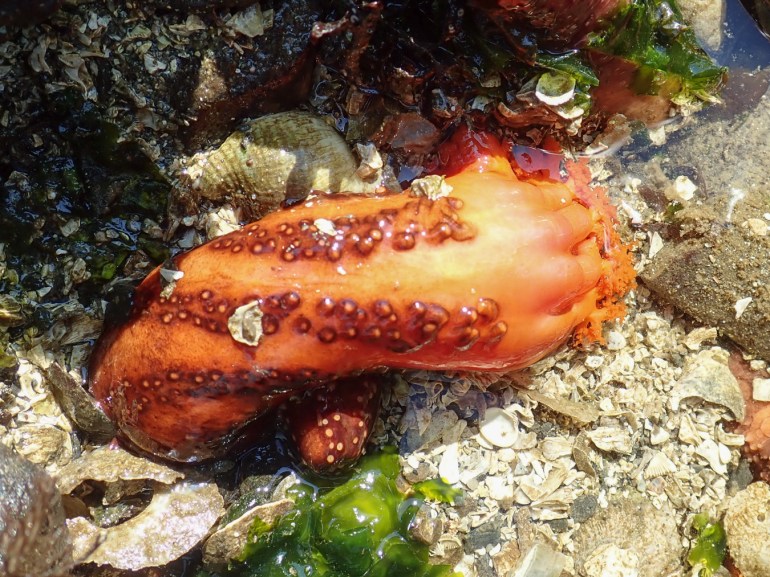
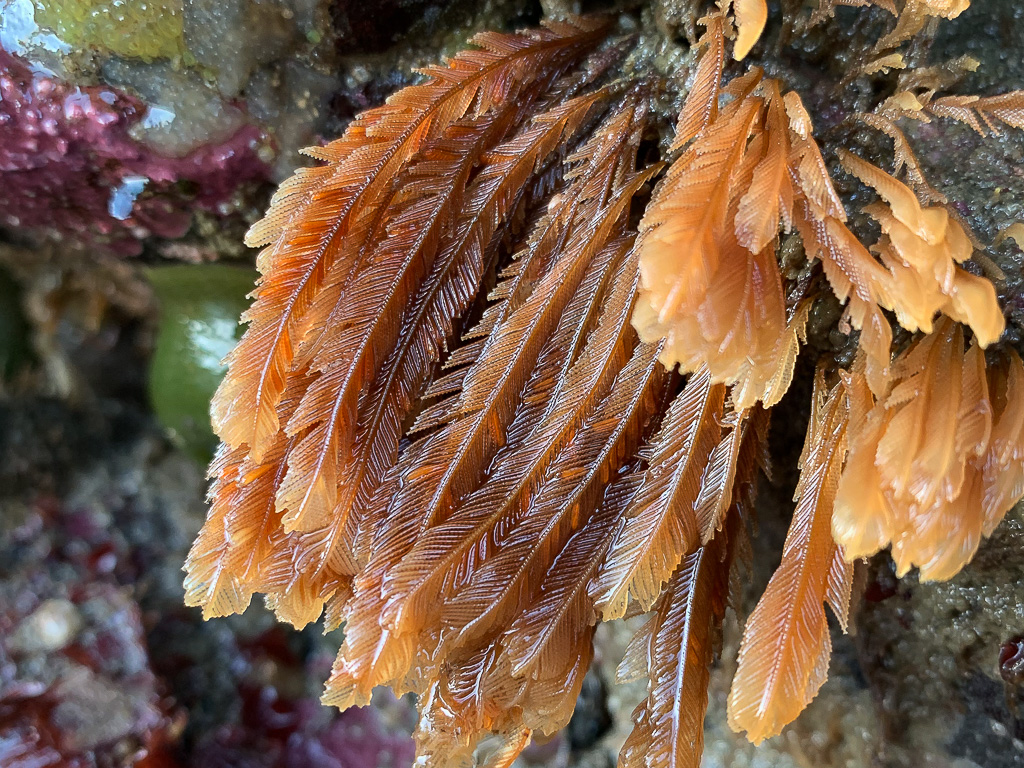

Biradial symmetry
Ctenophores lean to the biradial. They have eight rows of cilia for locomotion. They appear radial (imagine dividing the body like an eight-piece pizza). But, the analogy falls apart; they have a pair of feeding tentacles originating down by the mouth. With that, I’m on thinner symmetry ice than I like.

A tip of my cap to asymmetry
thoutershores is an inclusive place, so there’s no way I’m celebrating symmetry without inviting the sponges. There’s no plane of symmetry by which sponges can be divided into two equal parts.
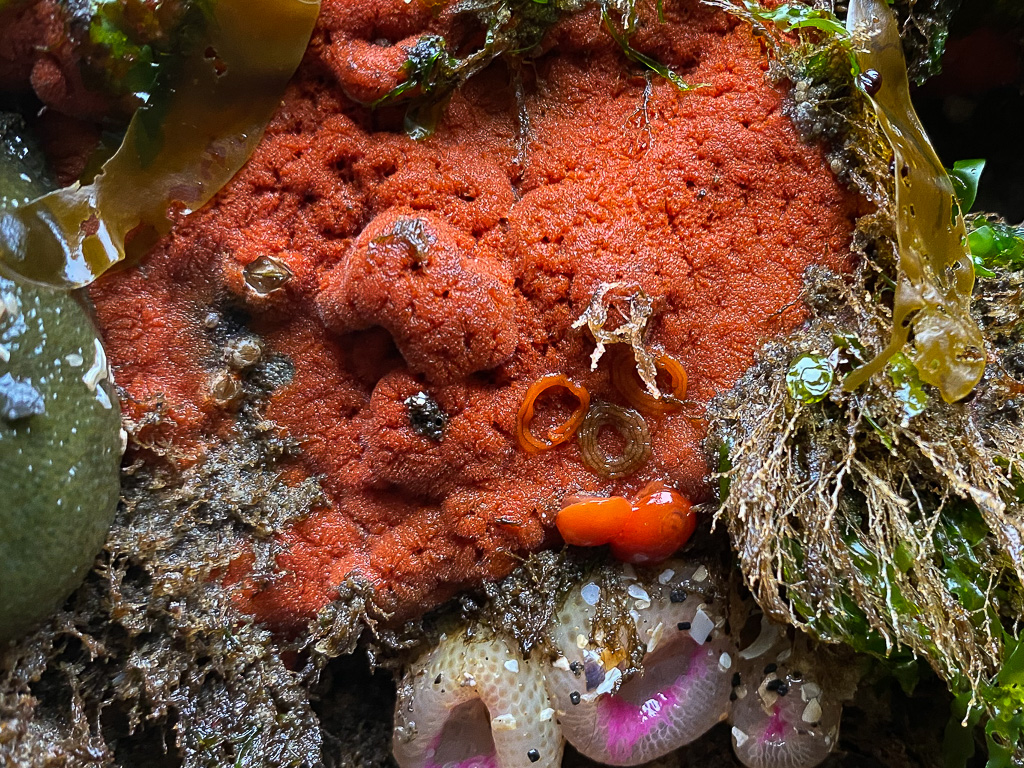
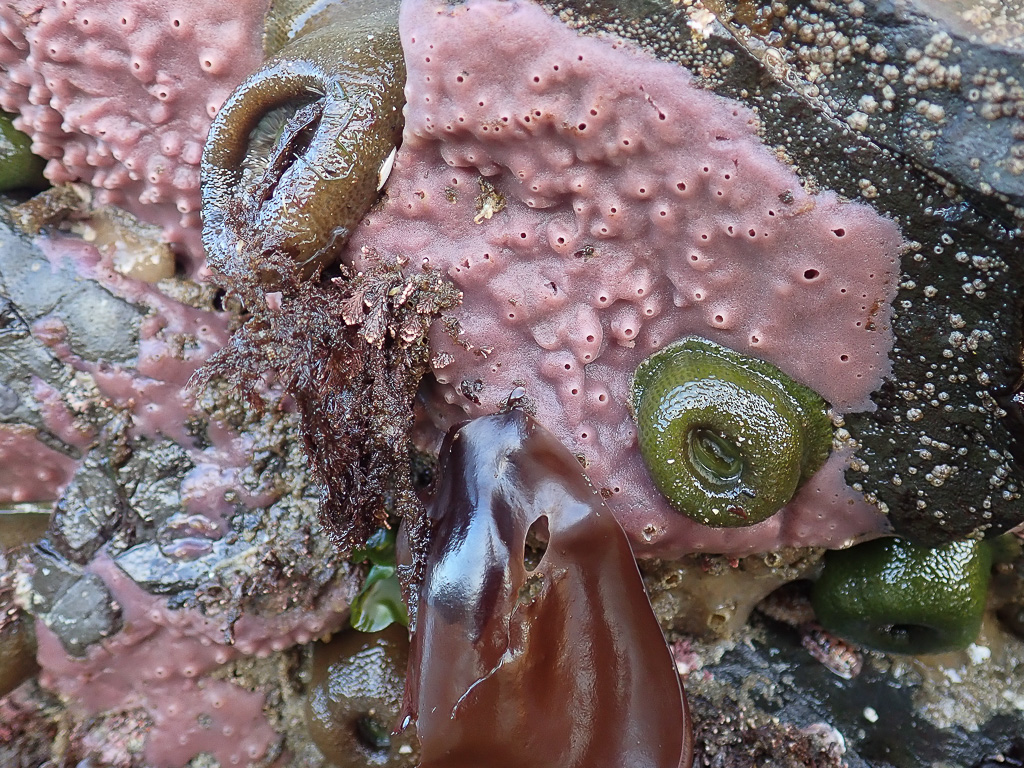

My symmetry party illustrates that examples of the main types of animal symmetry abound on the intertidal shore. Variations on the bilateral form are dazzling. There are fast movers among them and sessile forms too. Speaking of sessile forms, how about the radial crowd at the tide pools? Starfishes and anemones aren’t using their pizza pie symmetry for speed. Neither are the pelagic jellies; they’ve got good movement, but they do not speed, and being a bit at the mercy of the currents, they tend to get tossed up on the beach. So head over there. It won’t be long ’til you find a beachcast jelly. While you’re there, keep an eye out for symmetrically enigmatic ctenophores.
I updated this post on September 20, 2022.
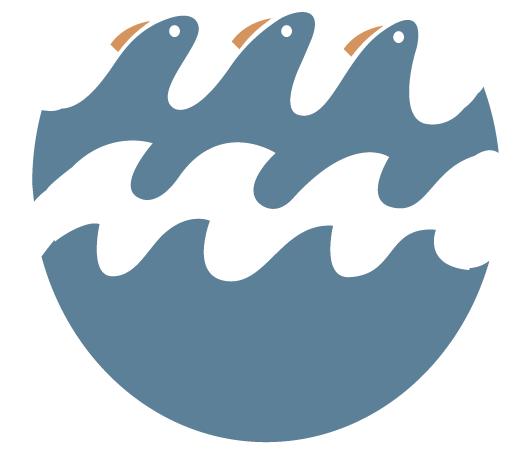
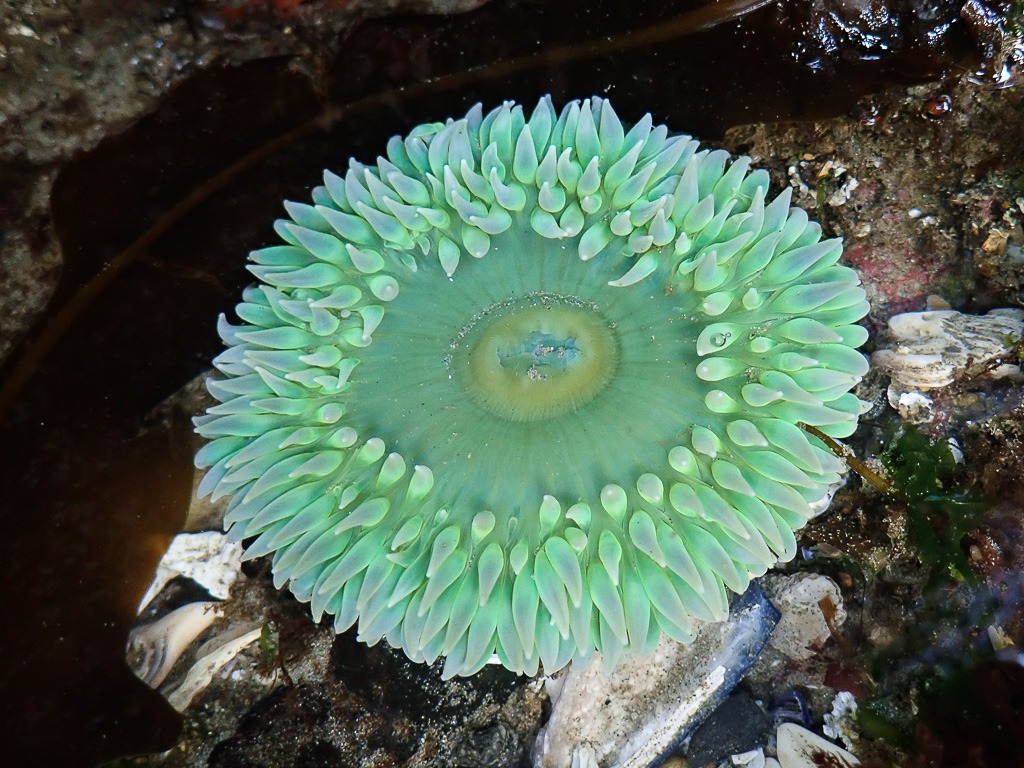
Fascinating! 😀
Thanks, Dora. I I appreciate it.
Gorgeous photos 🙂
Thank you so much, I’m glad you like the photos, it was fun putting them together.
This made me immeasurably happy. The photos are so wonderful and the idea of a symmetry beach party sounds like the most 🙂
That makes me happy, Jessica.
Wow. Quite the analysis! Hugely impressive. Thank you for taking the time.
You are welcome, John. I learned a lot putting it together. I appreciate your thought always!
I don’t know about anybody else Steve but I know I’m always on the lookout for enigmatic cteophores LOL. But seriously, a beautiful treatise on the symmetry (and asymmetry) with which nature gifts some of her many creatures. Well done!
What a fun post. And beautiful as well! My favorite is the anemone… Ostrich plumes being a close second.
I’m so glad you liked my post, and I wish to tell you, I’m not sure how your nice comment slipped away from me. Thanks you so much! The ostrich plumes are a favorite of mine too.
What a fabulous post: great photos as ever, and so much to think about when next on the seashore.
Hi, Margaret! I’m so sorry I let your very nice comment slip. My bad and I apologize. Good luck getting out to the shore, but please don’t do it ’til it’s safe!
We won’t. Luckily, the more interesting shores aren’t those the crowds flock to.
Fabulous post, Steve. I love how you break down the classifications and give us marvelous images to accompany them. Your knowledge of marine life is very impressive!!
Patti, I’m so sorry I didn’t get back to you right away. Yours was such a kind and inspiring comment, I thank you. It was my kind of challenge.
No worries! Wonderful that the challenge “spoke” to you!
What a fun post. And so much research and work. I’ll never wander along a beach and look at things in quite the same way.
Thank you! But I want to apologize to you for not acknowledging your nice words sooner.
An interesting post.
I’m so sorry for being late to acknowledge your kindness. It means a lot to me.
I read more scientific names in this post than I have since high school biology. I hope I exaggerate, but I can’t guarantee it.
Marsha, of all the comments I got on this post, yours made me smile the most. I’m sorry it took me so long to tell you.
No worries. I work on blogging time where the clocks run slower and 24/7. 🙂
A great take on this theme. And I love the images, the seashore, the shells and your extras . . . like Biradial Symmetry. So nice!
Biradial symmetry rocks! I’m sorry it’s taken me so long to acknowledge your kind and inspiring words. Thanks!
No apologies needed. Just glad I got to see your work.